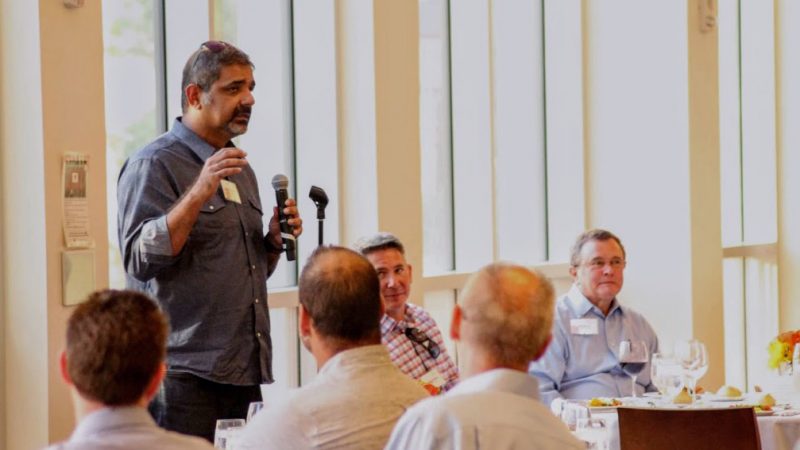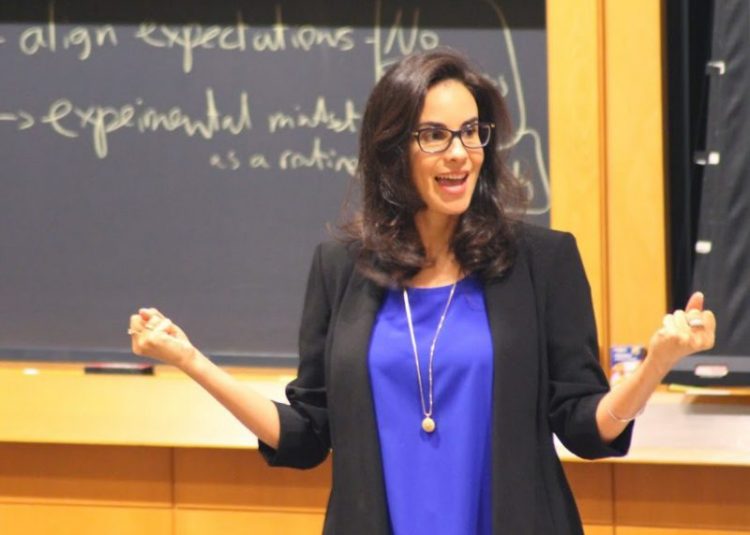Karim R. Lakhani, the Charles Edward Wilson Professor of Business Administration at Harvard Business School and the Laboratory for Innovation Science at Harvard (LISH) hosted the first annual Crowd Academy July 11-13, 2018 at Harvard Business School in Boston, Massachusetts. The event was graciously funded by the Schmidt Family Foundation.
The Academy was the first official event inviting organizations, platforms and academics to gather and discuss crowdsourcing and open innovation. Over 90 people attended.
The content of the conference itself was important, as was the opportunity for thought leaders of this emerging industry to meet, network, share experiences, learnings and obstacles. Because of this significance, Open Assembly thought it would be useful for the crowd if we pulled together a summary of takeaway themes that emerged during the event.

Transitioning to the Future of Work
Lakhani and Jin Paik, Senior Researcher and General Director of LISH kicked off the conference by talking about crowdsourcing trends. “It’s important for us at the lab to take on these types of activities,” said Paik. “In the past, LISH has been at the forefront of academic convening, but we recognize the need for practitioner focused workshops where we can effectively disseminate knowledge to those on the ground.” While crowdsourcing and open innovation have been around for over a decade, there is still friction within companies seeking to adopt the tools that have been created. While there is mounting empirical evidence that open tools, such as crowdsourcing, are better, faster and cheaper than traditional ways of solving problems, there are still cultural barriers within organizations that get in the way of change.
Michael L. Tushman, Paul R. Lawrence MBA Class of 1942 Professor of Business Administration, addressed these cultural barriers as he talked about his work around organizational ambidexterity and identity transformation. Tushman pointed to the need for business model innovation in the face of radical innovation, including crowdsourcing, AI and Blockchain. Tushman outlined how organizations must be able to maximize their current business models while exploring new models based on these new technologies.
The attendees at the conference agreed that there is a need to help organizations make this transition to the future of work by creating more consistent knowledge, research and business models for the demand-side (organizations), supply-side (platforms) and freelancers (digitally enabled independent workers, or “gig workers”).
What do we call this?
One of the issues discussed at the conference was the confusion around what to call the work. The terms open innovation, crowdsourcing, co-creation, collaborative innovation, open innovation contests, etc. all blend together. The first priority to facilitate more adoption is to create consistent language that everyone in the industry uses. Johann Fueller, CEO of HYVE and a professor of Innovation and Entrepreneurship at the University of Innsbruck, talked about the need to create a consistent framework for how we think about open innovation and crowdsourcing. The overarching goal of the work is to help organizations benefit from the digitally connected world by evolving their business models and creating a new future way of working. To do this, the group agreed that adopting an open innovation philosophy was important. An open innovation philosophy is supported by the process of co-creation and one of the most important tools to accomplish this is crowdsourcing.
The group also discussed, within the context of language, the importance of addressing the issue of fear and adoption. The use of terms like “innovation,” “transformation,” and “disruption” can be scary for an organization’s internal teams. Instead, concepts that relate to the future of work, open innovation, co-creation, collective intelligence and crowdsourcing need to be reframed and communicated utilizing terms that focus on enabling internal teams to get more and better work done. “It’s not that NASA wanted to use crowdsourcing to innovate ways of working,” said Balaji Bondili, Head of Deloitte Pixel, Deloitte Consulting, during a group conversation following a presentation about NASA’s enormous success spearheading a program. “It’s that they faced large budget cuts and were forced to reinvent the way they worked. Crowdsourcing was the best tool they found to accomplish their goals in the context of their new constraints.”

Creating Tools to Help Organizations Adopt
Another exciting discussion during the academy centered around models for organizational adoption. Jeff Davis, CEO Exploring 4 Solutions, LLC, and Elizabeth Richard, Founder, EER Strategies, LLC, presented their findings creating the Center of Excellence for Collaborative Innovation (CoECI) at NASA while working with NASA to adopt crowdsourcing as a standard tool. They shared that it took them seven years to create the program yet, from their learnings, they believe that a similar effort could be done in two to three years. Some in the audience asked the question, in the context of commercial organizations, if this could be done in six months. Bondili and Dyan Finkhousen, Director, Open Innovation and Advanced Manufacturing, General Electric, talked about their efforts to accomplish this.
On the academic front, Hila Lifshitz-Assaf, Assistant Professor of Information, Operations and Management Sciences, NYU Stern School of Business, shared her work on the importance of identifying the right problem as a first step in considering crowdsourcing for solution generation. Everyone in the audience agreed that the identification and structure of the right question is essential to getting quality results from any crowdsourcing project.
Additional issues discussed include:
- Gaining C-suite buy-in and support.
- Aligning a program with the organization’s business goals to prove relevance.
- Establish success metrics for any projects upfront.
- Taking time to understand the existing organizational culture and working smartly and sensitively within it.
- Making sure skilled employees and managers understand and communicate the importance of their role as curators.
- Reframing crowdsourcing as an additional support to help jobs become easier, not as a replacement for jobs.
- Experimenting first by doing trial runs using problems that have already been solved to test, compare and prove the efficacy of new tools to organizations.
- Starting projects using internal crowds versus external crowds as an important first step for buy in.
- Choosing the best crowds and platforms to accomplish goals.
- Developing internal and external communication strategies to support awareness, buy-in and success.
- Celebrating the internal problem definers instead of the external problem solvers to overcome the “not invented here” syndrome.
- Establishing fairness, trust, and transparency by being reliable, communicating what’s happening, communicating results.

Best Practices for Platforms
Another theme that emerged from the academy is the need for platforms to have consistent practices that organizations can understand and trust. By some counts there are over 700 open and crowdsourcing platforms selling services to organizations. With the goal of facilitating easier adoption, it is critical that best practices are established. These practices are beginning to emerge from leading platforms like Topcoder, Freelancer, Spigit, InnoCentive, and more. The group discussed the need to do further work to understand which best practices drive the best results for organizations.
The Way Forward
The goal of both LISH and Open Assembly is to facilitate the adoption of the philosophies and tools that are driving the future of work. We want to support creating common language, building organizational business models that support the adoption of open philosophies and facilitating a better understanding of the most effective platform practices.
Open Assembly is the resource for organizations, platforms and freelancers in the space of open innovation, co-creation and crowdsourcing. Our goal is to help everyone make a smooth transition by offering content, connections, consulting, community and research rooted in LISH’s academic findings.
As we discussed at the end of the Crowd Academy, LISH will begin hosting a bi-monthly webinar on topics related to crowdsourcing to further the conversation, share academic learnings and foster a community of practice.
Open Assembly is currently working with Topcoder on a State of the Industry report. We hope to engage with you soon on some report items we are crowdsourcing.
